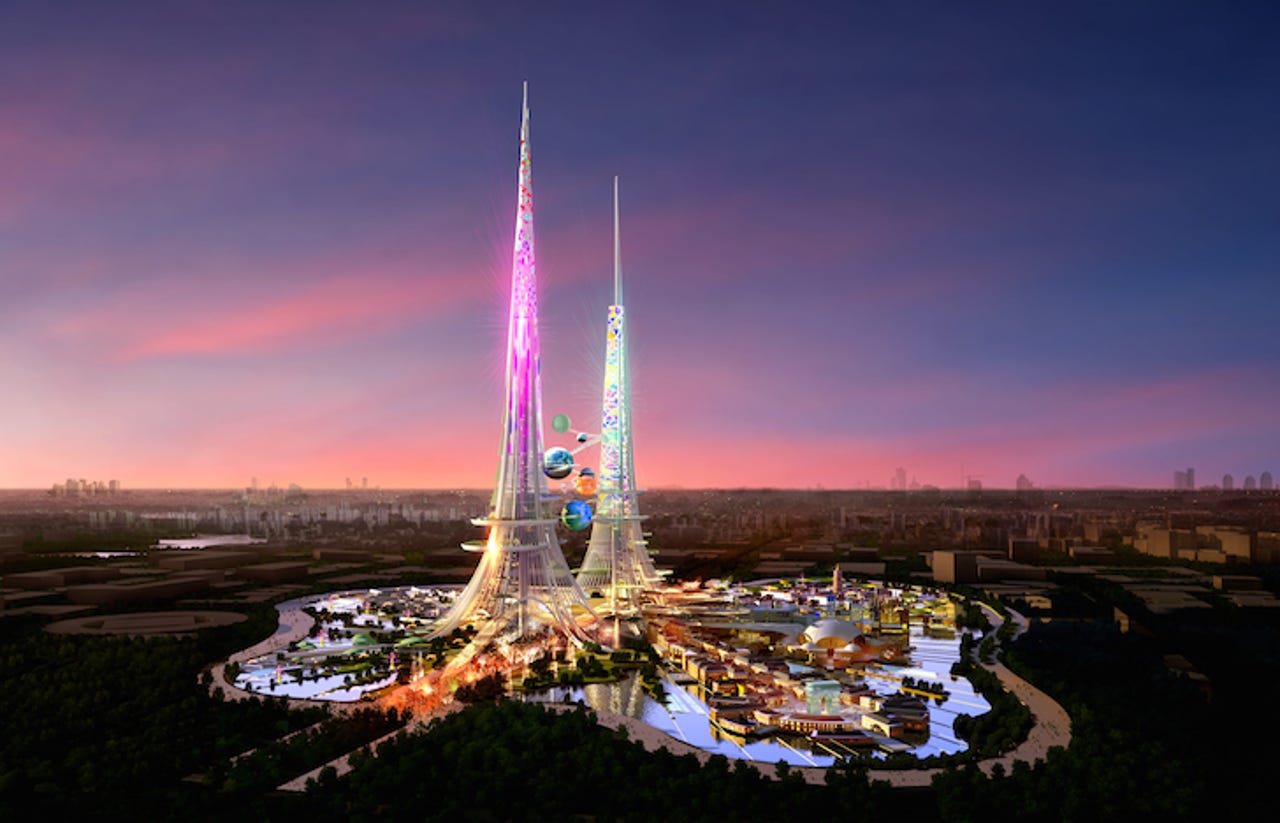China's new towers will be the tallest, greenest and pinkest


Plans have been unveiled for a pair of pollution scrubbing towers built on an island in one of the largest lakes in Wuhan, the City of a Thousand Lakes. The $2 billion Phoenix Towers will be the beacon of China's government-led focus on sustainability, Discover reports.
The taller of the two, called Feng, will rise a kilometer (3,280 feet) in the air -- that's about 150 meters (nearly 500 feet) above the current world's highest, the Burj Khalifa in Dubai. Most of the active environmental functions will be contained in the taller tower, which will feed excess electricity and clean air and water to the second, more passive tower, called Huang. Feng Huang means "phoenix" in Chinese. And why pink? To mirror the region's famous sunsets.
Commissioned by China's Hua Yan Group, British architectural firm Chetwoods created an ambitious master plan that incorporates large-scale environmental technologies into a focal point for a 3-kilometer (nearly 2-mile) avenue running through the island. "It was blatantly iconic," founder Laurie Chetwood tells Dezeen. "They wanted to take the Eiffel Tower experience on a stage further. It doesn't just stand there and become an iconic symbol of Wuhan, it has to do a job. We've applied as many environmental ideas as we possibly could to justify the shape and the size of them."
The steel towers with concrete cores will generate electricity from their photovoltaic cladding and the hydrogen fuel cells at their base. They'll also collect rainwater for recycling, and spherical restaurants will be suspended between the two towers.
Only the lower 100 floors of the taller tower can be inhabited (though the attractions aren't meant to serve as apartments or offices), with its upper portion dedicated to mechanical functions. Its multiple filtration systems will help clean the surrounding air, as well as water from the lake; and a solar-heated "thermal chimney" at the top will draw cool air up through the filtration systems. Other features planned for Feng include solar electricity plants throughout and wind turbines near the spire.
The shorter tower will have a perforated façade with a louver system for ventilation and lighting control (angled to admit light and air, but keep out rain and direct sunshine). It will also have insect hotels, bat boxes, and a 100-story-tall green wall filled with plants. Other features proposed for Huang include biomass boilers for waste recycling and plant-fuel heat, as well as galleries and bars.
If it all sounds over-the-top and outrageously ambitious, it is. "In China if you come up with a slightly mad idea, it's almost not mad enough," Chetwood explains to Dezeen.
The bottom of each tower is designed to resemble the raised root system of mangrove trees. Their concrete buttresses create an open space underneath and around the base for commercial and tourist-focused functions. The towers cover 7 hectares, though the entire site will cover 47 hectares. The planners hope to move from design to construction within three years.
Images: Chetwoods
Related on SmartPlanet:
- Next-generation high-rises offer glimpses of our urban skyline future
- The world's fastest elevator will soon go 95 floors in 43 seconds
- Iconic France, brought to you by Qatar
- How an invisible tower would reshape Korea's skyline
- Could skyscrapers soon be made of wood?
This post was originally published on Smartplanet.com